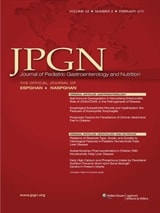new to the gluten free journey?
new to the gluten free journey?
 A recent study published in the the Journal of Pediatric Gastroenterology and Nutrition identified a new protein in celiac patients that may help detect the disease earlier than some of the traditionally used lab tests.
A recent study published in the the Journal of Pediatric Gastroenterology and Nutrition identified a new protein in celiac patients that may help detect the disease earlier than some of the traditionally used lab tests.
Contents
Toggle“The present study shows that higher levels of Glo-3A antibodies are associated with celiac disease both at the time of clinical diagnosis and before that point,”Glo-3A antibody production in the celiac group appeared, on average, about 2 years before TTG antibodies were detectable, at around age 3 versus age 5 for TTG antibodies. The researchers in this study suspect that Glo-3A antibody production is a biomarker of impaired immune tolerance and increased gut permeability, i.e., celiac disease. When diagnosing celiac disease, health care providers typically screen patients’ blood for the presence of TTG antibodies. TTG is an enzyme that alters the gliadin molecule by deamidating glutamine residues; these residues in turn bind to antigen presenting cells and activate T cells, leading to damage to the fingerlike cells called villi that line the small intestine. Over time, the cellular damage, known as villous atrophy, leads to malabsorption of food, gastrointestinal bloating, and diarrhea. But by the time TTG antibodies are detectable, villous atrophy has often already begun—prompting scientists to look for diagnostic tools that allow earlier diagnosis.
“These results may indicate that the immune pathology and subsequent damage that are characteristic of celiac disease start early in life”
 Dr. O – The Gluten Free Warrior
Dr. O – The Gluten Free Warrior
Stay up-to-date with the latest articles, tips, recipes and more.

*These statements have not been evaluated by the Food and Drug Administration. This product is not intended to diagnose, treat, cure or prevent any disease.
If you are pregnant, nursing, taking medication, or have a medical condition, consult your physician before using this product.
The entire contents of this website are based upon the opinions of Peter Osborne, unless otherwise noted. Individual articles are based upon the opinions of the respective author, who retains copyright as marked. The information on this website is not intended to replace a one-on-one relationship with a qualified health care professional and is not intended as medical advice. It is intended as a sharing of knowledge and information from the research and experience of Peter Osborne and his community. Peter Osborne encourages you to make your own health care decisions based upon your research and in partnership with a qualified health care professional.